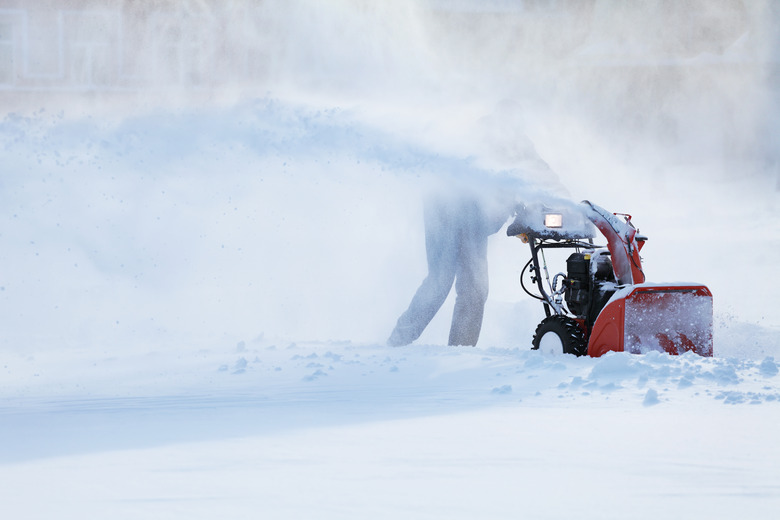What Weight Of Oil Do You Use In A Craftsman Snowblower?
When winter blows in, you want to make sure your snowblower is ready to blow it out. Having your Craftsman snowblower properly maintained will make all the difference in keeping your property free of snow. Most importantly, oil for snowblowers needs to be the right viscosity to get the job done.
Using the Right Snowthrower Oil
Using the Right Snowthrower Oil
What you use in your snowblower depends on the climate in your region. Craftsman user manuals suggest using a 5W30-weight oil for most of their snowblowers when the temperature is above 0 degrees Fahrenheit. Your machine may vary, so be sure to check specifics for your model. Some maintenance shops sell what they call 5W30 snowthrower engine oil, but the reality is that 5W30 motor oil is generally the same whether it's going in a car or your snowblower.
More important is whether to get natural oil or synthetic. This is especially true if where you live is subject to temperatures that soar and plummet. In that case, the owner's manual suggests a DW30 synthetic oil, which will work right down to -40 degrees Fahrenheit and well over 0 degrees.
Either way, the oil should be a premium-quality, high-detergent four-stroke oil. You'll use under one quart of oil in the tank, so this is when you invest in quality oil to protect your engine for the long haul.
Breaking in New Machines
Breaking in New Machines
If you've just gotten your snowblower, you've got to break it in. Just like with a car or any other motor, it's ideal to do an oil change soon after bringing it to life. The user's manual will recommend putting only enough oil in for a few hours of work and then doing an oil change after five hours or whatever your specific model's manual suggests. This flushes out contaminants, machine dust and metal shavings that are common in new engines.
Since you get almost 1,000 milliliters in a quart of oil, and most snowblower oil reservoirs hold 600 milliliters, using just a quarter or third of the bottle for initial running is a good plan. That way, you'll have enough left for a full tank after the first oil change.
Doing a Snowblower Oil Change
Doing a Snowblower Oil Change
Depending on your machine, the recommended time for an oil change is either every 25 or 50 hours of operation or annually. When in doubt, it's always best to err on the side of changing the oil since you can't overdo it.
To change the oil, you need to use up the fuel in the machine first. Run it until the fuel is consumed. Be sure the cap is secure. Refer to the owner's manual if you're unsure of where the oil drain is, and place an oil collection container under it once you locate it.
Remove the oil drain plug and angle the snowblower up and back to ensure you remove all the old oil. Replace the drain plug after it's drained. Put fresh oil in so it's between the "low" and "full" lines, and then return the dipstick to its rightful spot. Be sure to dispose of the old oil at a proper oil recycling facility.
Avoiding Trouble in Snowblowers
Avoiding Trouble in Snowblowers
Check the fuel and oil levels before every use of the snowblower. It's best to keep only enough fuel in the blower for a month's use since gasoline deteriorates over time. Consider adding a small amount of fuel stabilizer if you might go a bit long between fuelings.
Check the auger belt periodically between uses because this can break during use if it's cracked. You'll need to replace an auger belt more often on a single-stage machine, so consider having a spare around in case of a big storm. Change your spark plug at least annually.
